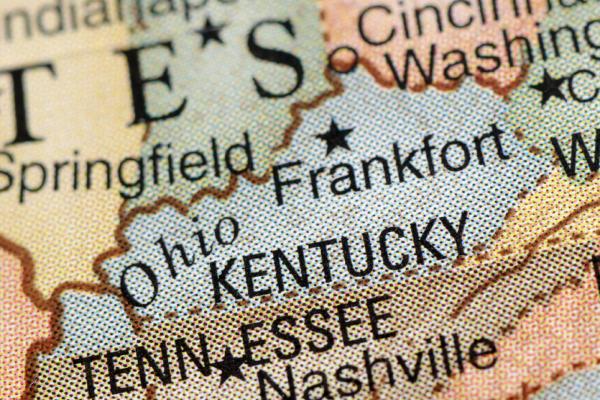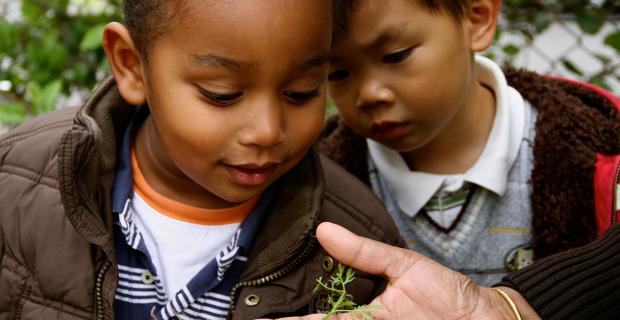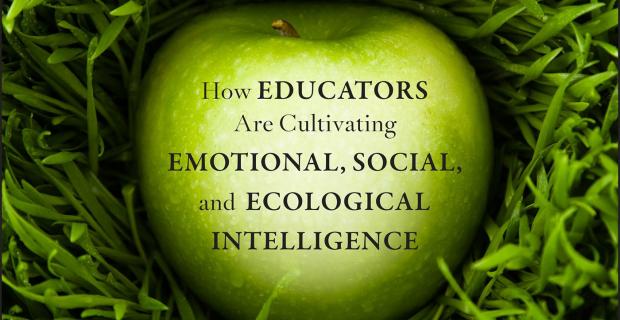Taking a Power Trip

In this excerpt from Ecoliterate: How Educators Are Cultivating Emotional, Social, and Ecological Intelligence, the authors tell the story of a field trip organized by a school in Spartanburg, South Carolina to view the impact of mountaintop coal mining. While many schools don't have the resources for such an ambitious trip, the story demonstrates Ecoliterate practices — above all, making the invisible visible — that are applicable in a wide range of school settings.
Among the lessons illustrated by this story: It's an eye-opener for students to trace energy, water, and other resources to their sources, or waste to its destination, and to discover the often-unseen impacts of their actions. Experiencing these impacts firsthand, whether at a distant mountaintop-mining site or a nearby trash-processing facility, is more powerful than just reading about them. Meeting the people who are affected by their practices is a powerful learning experience. Students learn more about complex questions from trying to understand the motivations and rationales of people on all sides of an issue than from pointing fingers and identifying "bad guys." Once back at school, it's important for students to reflect on their experiences and move the reflections into action.
Like many communities, Spartanburg, South Carolina, seems like a place with few connections to coal. Situated at the foot of the Blue Ridge Mountains, this small college town boasts six institutions of higher learning and a vibrant arts community. Though Spartanburg was formerly a center of textile manufacturing, most of its residents now work in health care, government, education, the corporate headquarters of Denny's, or the nearby BMW manufacturing plant.
So when Allyn Steele, a history teacher at Spartanburg Day School, was challenged to inspire a sense of civic responsibility in his students, his decision to direct their attention to mountaintop mining in Appalachia was not an immediately obvious one.
He could, of course, point to some basic facts connecting the Carolinas to mountaintop mining. For example, Duke Energy, headquartered in North Carolina, is the nation's third largest user of coal acquired through mountaintop mining. And trains carrying coal from Kentucky sometimes passed by the local greasy spoon, Ike's Korner Grille.
But Spartanburg students didn't actually see coal being mined or burned. They couldn't truly grasp the meaning of "coal keeps the lights on." And they had little, if any, knowledge about or feeling for the impact of modern-day coal mining on the people and ecosystems of Appalachia.
So Steele designed a course called "The Power Trip," which examined the political, ecological, and economic consequences of coal energy — and most significantly, included a field trip to southeastern Kentucky.
Riding the Coal Line
On a Saturday morning in February, Steele, another adult chaperone, and six students set out to drive some 300 miles, tracking as closely as possible the coal line that ran between Spartanburg and southeastern Kentucky. When they arrived nearly seven hours later, the director of the retreat center, where they would spend the next several nights, warned them: "You can't drink the tap water. All the water in the water system is tainted."
Patty Tarquino, an organizer with Kentuckians for the Commonwealth, then led them on a tour that began with a hike in the Bad Branch Falls Nature Preserve, which boasts the largest concentrations of rare and uncommon species in the state. As the students made the trek, they occasionally helped each other scramble across a boulder or cross a creek, which Steele appreciated as team-building opportunities. But the primary goal was to see what Appalachia, one of the most biologically diverse regions in the country, looks like when undisturbed by human actions. Students saw rare flora and fauna and learned about how nature thrives in a system. They were told, as Steele recalls, "One has to be pretty respectful of all forms of life to keep that system in balance." They were also being prepared for a lesson in contrasts.
Bearing Witness
After the hike, Tarquino drove the students up a narrow country road traveled primarily by coal trucks. She explained that private coal companies had purchased this public land to mine the coal reserves below ground. As they drove, they passed several posted signs along the roadway:
"DYNAMITE"
"EXPLOSIVES"
"DON'T COME ANY FURTHER"
"I was kind of freaking out," recalls Steele. "One wrong turn, and we'd fall off the mountain."
Local residents Sam and Evelyn Gilbert, whose house had a view of Black Mountain, the highest mountain in Kentucky and one scarred by strip mines, also rode with the students. At night, they said, you could see the lights of the mining site from their driveway. And when a blast occurred, you could feel the whole house shake.
Gilbert, who used to work at a strip mine, told the students that he knew what good surface mining was supposed to look like. He said that good surface mining practices required restoring a site to its original shape and soil contents. But that is not what many people believe is possible after a mountaintop mining operation. After all, even if the land is restored to its former contours, the plants and animals that once thrived in that ecosystem often can no longer survive. Headwater streams are routinely buried. And the area is left looking oddly stark and lifeless.
A Bird's-eye View
A few hours northwest of Black Mountain is Hazard, Kentucky, a city of nearly 5,000 surrounded by mountaintop mining — even though its residents cannot see the impact from where they live.
To grasp the magnitude of mountaintop mining here, you need to get in a small plane—which is what Steele and his students did on day two. What they saw — for as far as the eye could see — was land utterly transformed from anything that looked natural.
"Words really can't describe the level of destruction and degradation and complete disrespect for the land there," said Matt Roberts, who was fifteen years old when he made the trip. "You go from gorgeous mountains and trees and valleys to sludge ponds and fractured earth."
After the plane landed, several students appeared to be in shock.
"I've never seen something so intense," one said.
"These were all mountains at one time?" another asked.
"How is that possible?" asked a third.
Creative Discomfort
On the last day of the trip, the students — ripe with questions — visited a coal processing plant, where the company representative also took the opportunity to challenge them.
"The representative said [the coal company] was doing the world a great service," recalls Roberts. "He said they left the land better than it was before. He said they were promoting economic growth [because you can build on flat land]. And, repeatedly, he said, 'Coal keeps the lights on. Are you going to stop using lights?'"
The students had already learned that mountaintop mining provides far fewer jobs than traditional mining ever did; sites are often too unstable to build upon after mining; and reclaimed land is never as good as the natural environment.
But Roberts was particularly moved to challenge what he heard when the coal representative stated, "There's nothing wrong with the water. I'm not worried about my water."
Having visited with Sam Gilbert, who lived near a creek as brown as chocolate milk, Roberts asked, "Are you on city water or well water?"
"I'm on city water," the representative replied.
"All the people we talked to are on well water," Roberts said, knowing that meant they were much more likely to be drinking water polluted by mining, since city water is treated to remove chemicals and impurities.
In the end, the coal representative stuck to his defense of mountaintop mining. But the students did not, as might be expected, adopt a simplistic oppositional posture that painted those who work in the coal industry as the "bad guys." What they learned instead was both more complex and realistic.
Roberts said the experience taught him: "We're the ones to blame. We want a lot of energy, and we want it cheap. The coal companies are meeting the demands of the people. It's a horrifying way of doing it. But if we weren't asking for it, they wouldn't be doing it."
Students recognized, Steele added, that "it's a systemic problem — we're all connected to this, we're all in on this."
And for anyone who might have missed the point, the connection was driven home to them as they left the plant, got into their cars, and headed back south to Spartanburg — in the same direction as a freshly loaded coal train.
Back to School
Having awakened both a sense of understanding and caring about the impact of mountaintop mining on the people and ecosystems of Appalachia, Steele next wanted to propel his students into action. "The idea was to get them to reflect on their experiences and move those experiences out into the world," he said.
Christopher Riehle helped write an article for Spartanburg Herald-Journal. Other students offered glasses of water with lumps of coal inside at a public forum. And Roberts, Riehle, and others cofounded the school's first Environmental Club, which grew from six to thirty members in two years.
"Allyn created an experience that caught everybody's attention," recalled Spartanburg school headmaster Chris Dorrance. "There were people living here who didn't know much about Kentucky or really believe mountaintop mining was happening. And he brought back kids with passion, and that, of course, was very good." It also, he said, helped galvanize the school community about the larger issues of energy and sustainability.
From the perspective of a school leader, he added, "I don't think there is any question that there is a growing imperative to address sustainability."
And the key to success, Dorrance and Steele agree, lies in making connections — between the lives of students and those of people and ecosystems at the other end of our energy, food, and water supplies.
"If we are to sustain ourselves, we have to think and act differently," Steele said. "And I think we can make education a valuable asset for that transformation."




